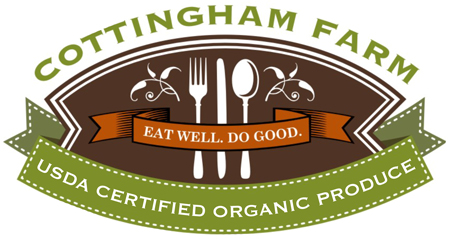
The Need for Change has only grown more urgent since we started farming 14 years ago. We started farming to help improve the state of the Goldsborough Creek. But so much more than the is at stake. Our waterways are hypoxic and unproductive. Public health is abysmal and health care costs are high. Animals from hogs to poultry and more suffer horrific lives in Confined Animal Feed Operations (“CAFO’s”). Eighty percent of chronic illnesses are tied to our food, from cancers to depression to autoimmune diseases. The climate is almost irreversibly impaired. These problems all arise from one source – our farms and our food choices. As Pogo said in a long-ago comic strip: “We have met the enemy and he is us.”
The Need for Change
The current food supply system in Maryland, as in much of the country, is dominated by low value corn and soy, fed to confined animal feed operations (“CAFO’s”), chicken “broilers” in the case of Maryland, and beef, hogs, and chicken in other areas of the country, which is then distributed on a national basis. This industrial system produces “cheap” food with very high costs.
It costs taxpayers billions of dollars in annual federal corn and grain subsidies.
It imposes extraordinary health care costs on Americans due to:
(i) reliance on non-therapeutic doses of antibiotics which are causing MRSA and other antibiotic-resistant bacteria (with average per patient costs of over $60,000);
(ii) widespread use of pesticides including the herbicide atrazine which is banned in its country of origin and Europe as a suspected carcinogen and glyphosate which is tied to scores of bodily processes (see Dr. Stephanie Sebly’s book “Toxic Legacy”). Yet both are applied liberally on American corn and routinely found in river and rainfall samples in the Chesapeake Bay region;
(iii) the advancement of obesity, diabetes, heart disease and hypertension fueled by subsidized corn (Harvard’s Walter Willett says nutritionists agree that corn “is the substrate for high fructose corn syrup and very cheap and sugary beverages and feedlot pork and red meat…which is fueling our epidemics of obesity and diabetes”, with direct annual costs of $70B);
(iv) increasing concern with food-borne pandemics, with episodes of salmonella in eggs, e-coli in beef, campylobacter in chicken, and other food-borne pathogens;
(v) growing recognition that, for all its risks, such food has inherent nutritional deficiencies – e.g., high levels of “bad” cholesterol in CAFO eggs versus high levels of “good” cholesterol and vitamin D in eggs of pastured chickens; seven times the amounts of saturated fat in corn-fed versus pastured meat and disturbed omega3/omega 6 ratios; and little or reduced antioxidants and nutrients in vegetables sprayed with pesticides; and
(vi) the unacceptable situation of food insecurity -which especially affects children- because high caloric and less nutritious food is cheaper to buy than clean nutritious food.
It imposes tremendous costs on our environment through:
(i) the flow of excess nutrients (10 and 100 pounds, respectively, of phosphorus and nitrogen per acre per year) and sediment (up to 5 tons per acre per year) into the Chesapeake Bay and other watersheds, and the resulting dead zones that can support no aquatic life;
(ii) degradation of the nation’s topsoil by the widespread use of synthetic fertilizers, lack of use of natural fertilizers which could rebuild soil tilth, and failure to practice meaningful crop rotation in a corn/soy model;
(iii) failure to properly characterize and treat millions of tons of animal waste, with the resulting pollution of ground and surface waters;
(iv) a profit-driven and very intensive use of land that has no room for implementation of buffers, cover crops and other environmental best management practices;
(v) reliance on fossil fuels and climate impact in a system that transports food an average of 1,500 miles (more for fresh produce) before it appears on the consumer’s plate.
For these and many other reasons, the current system is not sustainable.
For further information on these topics go to Health & Environment and Links.
